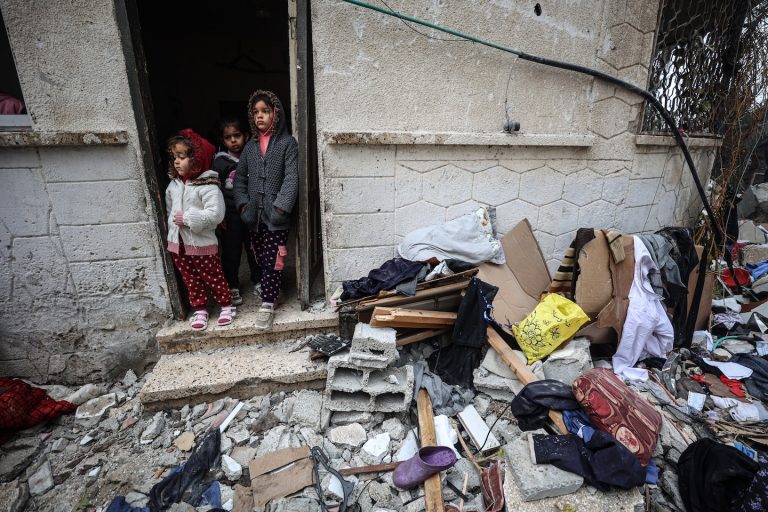His office said in a statement that Netanyahu ordered the Israeli army to present to the government a “double plan” to remove the civilian population from combat zones and “collapse” the four remaining Hamas brigades that he says are still in Rafah.
It was not clear what such a plan would look like. Israeli air strikes on Rafah on Thursday night killed at least five people, according to local health authorities, increasing fear among the displaced there. The United Nations Relief and Works Agency for Palestine Refugees, or UNRWA, estimates that the city's population has risen to at least 1.4 million, more than five times its pre-war number, with thousands of people sleeping in tents with little protection.
Yasmine Hussein, who has been displaced four times since fleeing northern Gaza at the beginning of the war, said she heard “multiple bombings throughout the night.”
“We have become uncertain about our safety,” she said, and people are worried about an incursion in the coming days. She said: “Every day that passes increases the fears of Rafah residents.” “The looming threat of becoming targets is clear.”
A medical official at the Kuwaiti Hospital in Rafah said that he received five people killed and 13 wounded in one of the raids.
The Israeli army did not immediately respond to a request for comment.
Statements from Netanyahu Other Israeli officials over the past week, who pledged to continue their campaign in Rafah, have alarmed humanitarian groups and prompted troubling statements from US and foreign officials.
National Security Council spokesman John Kirby said Thursday that a major military operation in Rafah “would be a disaster.” He added that under the current circumstances, the United States “will not support this.” The United States “has not seen any plans that would convince us of this.” [Israelis] Kirby said: “They are about to or are planning to carry out any imminent military operations in Rafah.”
He added, “More than a million Palestinians are taking shelter in or around Rafah.” “This is where Israel asked them to go.”
President Biden on Thursday made some of his most direct criticism of Israel's military operation in Gaza yet, calling it “overblown.” He is pressing for a cessation of hostilities in exchange for the release of some hostages still held by Hamas and other groups after the October 7 attack on Israel.
Aid groups warned this week that relief efforts would suffer further if Israel pushed deeper into Rafah.
The Norwegian Refugee Council said on Thursday that “disease and famine are still present among the displaced population.” UN Secretary-General Antonio Guterres said the incursion would exacerbate “what is already a humanitarian nightmare with untold regional consequences.”
The International Rescue Committee warned this week that if Rafah faces the same fate as the destroyed Gaza City and Khan Yunis, “All parts of Gaza will be destroyed – along with any lifeline of hope and survival for the people of Gaza.”
The UNRWA director told reporters on Friday that eight Palestinian police officers were killed in three air strikes over the past four days in Rafah and that police say they will no longer accompany aid deliveries.
Philippe Lazzarini said conditions were “becoming more and more severe and confusing.” He said he was unsure how long his agency would be able to “operate in such a high-risk situation.”
In Rafah, people responded to the news Friday with confusion and despair.
Ahmed Shaqura, 27 years old, a displaced person from Gaza City, said: “The fear that grips us is clear.” “There is no other safe haven inside Gaza.”
Nour Arafa, 23, also from Gaza City, said she had moved seven times since October 7. She doesn't know where to go next. Khan Yunis under military siege; Deir al-Balah is already overcrowded. Egypt rejected the idea of receiving Palestinian refugees from Gaza. Cairo, concerned about security and not wanting to be seen as complicit in the displacement of Palestinians, took steps over the past week to bolster border security.
Arafa asked what she said was “the prevailing question on everyone's minds.”
“Where do we go from here?”
Claire Parker, Kate Brown, Annabelle Timsit and Karen de Jong contributed to this report.

